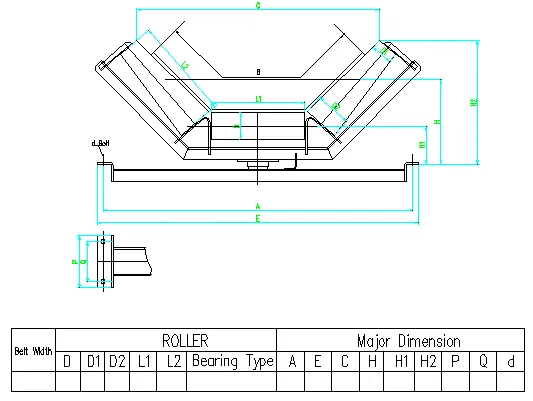 Afrikaans
Afrikaans  Albanian
Albanian  Amharic
Amharic  Arabic
Arabic  Armenian
Armenian  Azerbaijani
Azerbaijani  Basque
Basque  Belarusian
Belarusian  Bengali
Bengali  Bosnian
Bosnian  Bulgarian
Bulgarian  Catalan
Catalan  Cebuano
Cebuano  Corsican
Corsican  Croatian
Croatian  Czech
Czech  Danish
Danish  Dutch
Dutch  English
English  Esperanto
Esperanto  Estonian
Estonian  Finnish
Finnish  French
French  Frisian
Frisian  Galician
Galician  Georgian
Georgian  German
German  Greek
Greek  Gujarati
Gujarati  Haitian Creole
Haitian Creole  hausa
hausa  hawaiian
hawaiian  Hebrew
Hebrew  Hindi
Hindi  Miao
Miao  Hungarian
Hungarian  Icelandic
Icelandic  igbo
igbo  Indonesian
Indonesian  irish
irish  Italian
Italian  Japanese
Japanese  Javanese
Javanese  Kannada
Kannada  kazakh
kazakh  Khmer
Khmer  Rwandese
Rwandese  Korean
Korean  Kurdish
Kurdish  Kyrgyz
Kyrgyz  Lao
Lao  Latin
Latin  Latvian
Latvian  Lithuanian
Lithuanian  Luxembourgish
Luxembourgish  Macedonian
Macedonian  Malgashi
Malgashi  Malay
Malay  Malayalam
Malayalam  Maltese
Maltese  Maori
Maori  Marathi
Marathi  Mongolian
Mongolian  Myanmar
Myanmar  Nepali
Nepali  Norwegian
Norwegian  Norwegian
Norwegian  Occitan
Occitan  Pashto
Pashto  Persian
Persian  Polish
Polish  Portuguese
Portuguese  Punjabi
Punjabi  Romanian
Romanian  Russian
Russian  Samoan
Samoan  Scottish Gaelic
Scottish Gaelic  Serbian
Serbian  Sesotho
Sesotho  Shona
Shona  Sindhi
Sindhi  Sinhala
Sinhala  Slovak
Slovak  Slovenian
Slovenian  Somali
Somali  Spanish
Spanish  Sundanese
Sundanese  Swahili
Swahili  Swedish
Swedish  Tagalog
Tagalog  Tajik
Tajik  Tamil
Tamil  Tatar
Tatar  Telugu
Telugu  Thai
Thai  Turkish
Turkish  Turkmen
Turkmen  Ukrainian
Ukrainian  Urdu
Urdu  Uighur
Uighur  Uzbek
Uzbek  Vietnamese
Vietnamese  Welsh
Welsh  Bantu
Bantu  Yiddish
Yiddish  Yoruba
Yoruba  Zulu
Zulu Conveyor Drum Pulley - Durable and Efficient Conveyor Components
Understanding Conveyor Drum Pulleys Function and Importance
Conveyor systems play a crucial role in modern industrial operations, facilitating the efficient movement of materials over various distances. Among the key components of these systems are conveyor drum pulleys, which are essential for maintaining the effectiveness and reliability of conveyor belts. This article will explore the anatomy, functionality, and significance of conveyor drum pulleys, shedding light on their critical role in industrial applications.
Anatomy of Conveyor Drum Pulleys
A conveyor drum pulley is a cylindrical component located at either end of a conveyor belt system. Typically constructed from robust materials such as steel, these pulleys are designed to withstand significant wear and tear associated with material handling. They come in various configurations, including drive pulleys, tail pulleys, and bend pulleys, each serving specific functions within the conveyor system.
1. Drive Pulleys These are connected to a motor and are responsible for moving the conveyor belt. As the motor rotates the drive pulley, it pulls the belt along, enabling the transport of materials. 2. Tail Pulleys Located at the discharge end of the conveyor, tail pulleys serve to redirect the belt back to the drive pulley. They play a crucial role in maintaining belt tension and alignment, ensuring that the system runs smoothly.
3. Bend Pulleys Used to change the direction of the conveyor belt, bend pulleys help redirect the material flow. They are strategically positioned in conveyor systems to allow for space-saving designs and efficient material handling.
Functionality
conveyor drum pulley

The primary function of conveyor drum pulleys is to ensure the continuous movement of the conveyor belt. They support the belt by providing a sturdy surface for its operation. Additionally, pulleys help maintain the tension necessary for efficient belt operation. Proper tensioning reduces slippage and promotes optimal performance of the conveyor system.
Moreover, the design and construction of drum pulleys impact the overall efficiency of material transport. For instance, pulleys with a larger diameter allow for smoother belt movement, reducing wear and the risk of system failures.
Importance in Industrial Applications
The significance of conveyor drum pulleys extends beyond mere functionality. They contribute to the safety, efficiency, and longevity of conveyor systems. A well-maintained pulley system can lead to decreased operational costs by minimizing downtime and reducing maintenance needs.
In industries such as mining, manufacturing, and logistics, the reliability of conveyor systems is paramount. Drum pulleys enhance the overall resilience of these systems, ensuring that materials are transported quickly and securely. Moreover, advancements in pulley technology, including innovations in materials and design, are pushing the boundaries of efficiency and sustainability within industrial operations.
Conclusion
Conveyor drum pulleys are indispensable components in the realm of material handling. Their ability to facilitate the smooth operation of conveyor belts not only enhances productivity but also contributes to the safety and reliability of industrial processes. As industries continue to evolve, so too will the technology behind conveyor drum pulleys, ensuring that they remain at the forefront of efficient material transport solutions. Understanding their function and importance is essential for anyone involved in the design, maintenance, or operation of conveyor systems.
-
Revolutionizing Conveyor Reliability with Advanced Rubber Lagging PulleysNewsJul.22,2025
-
Powering Precision and Durability with Expert Manufacturers of Conveyor ComponentsNewsJul.22,2025
-
Optimizing Conveyor Systems with Advanced Conveyor AccessoriesNewsJul.22,2025
-
Maximize Conveyor Efficiency with Quality Conveyor Idler PulleysNewsJul.22,2025
-
Future-Proof Your Conveyor System with High-Performance Polyurethane RollerNewsJul.22,2025
-
Driving Efficiency Forward with Quality Idlers and RollersNewsJul.22,2025





























